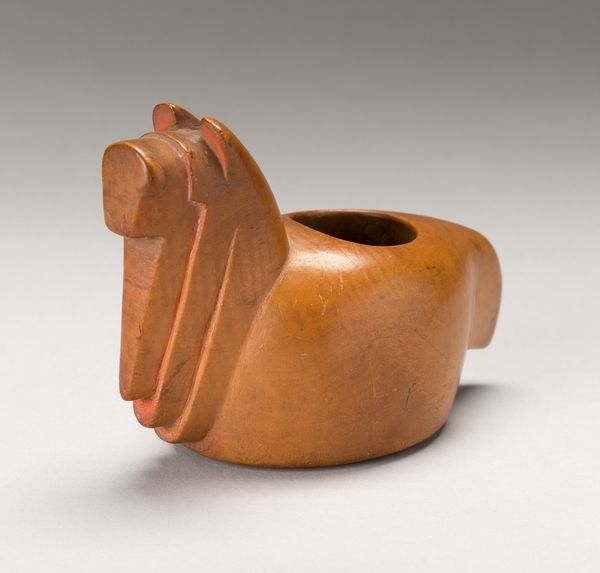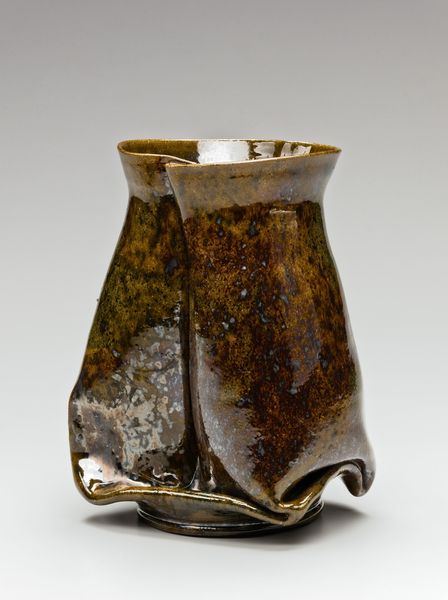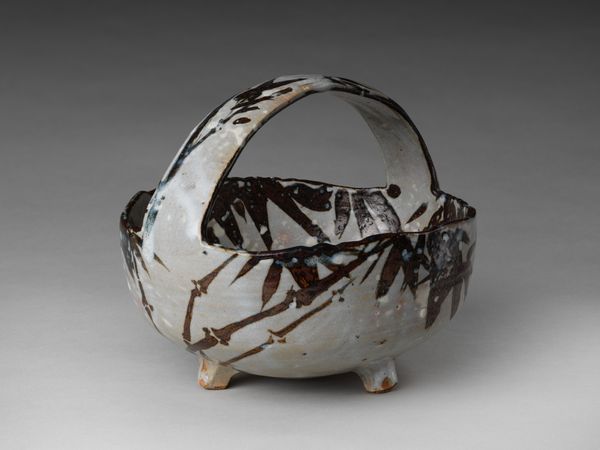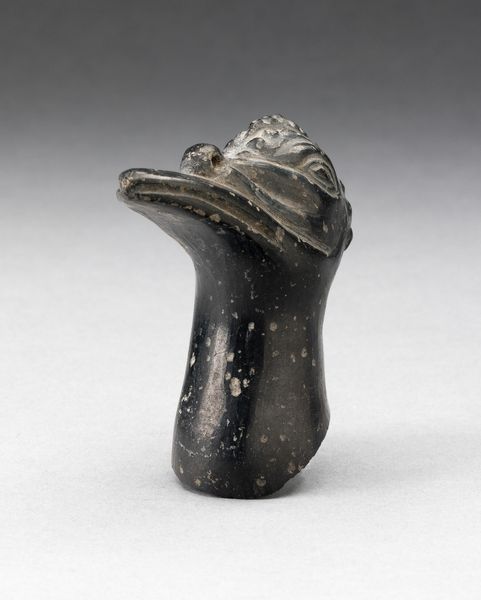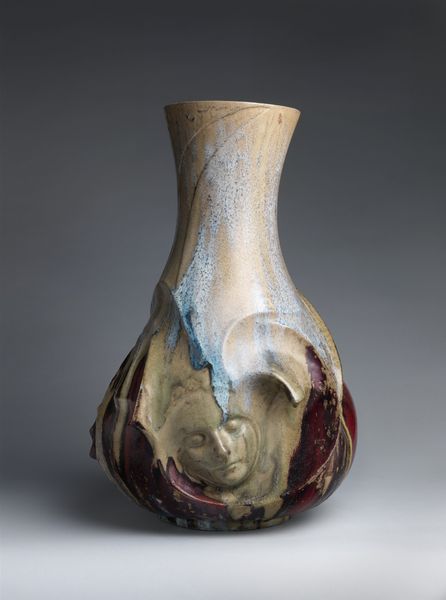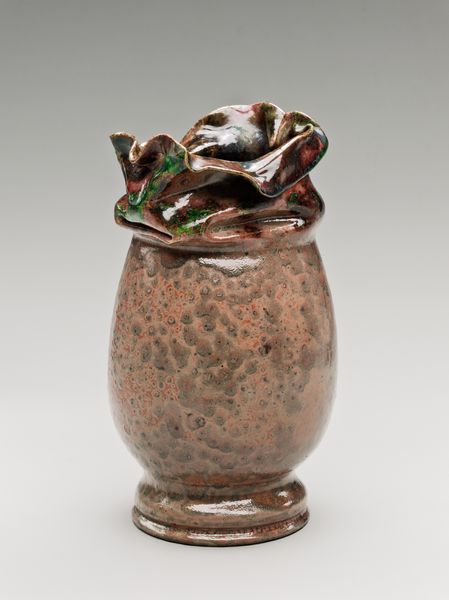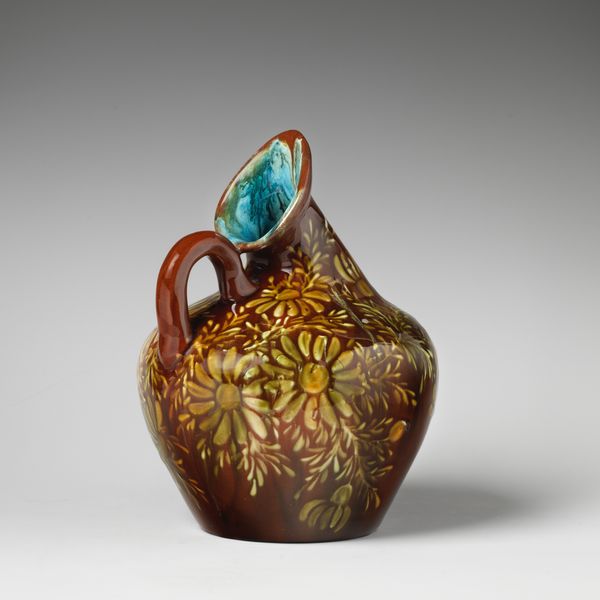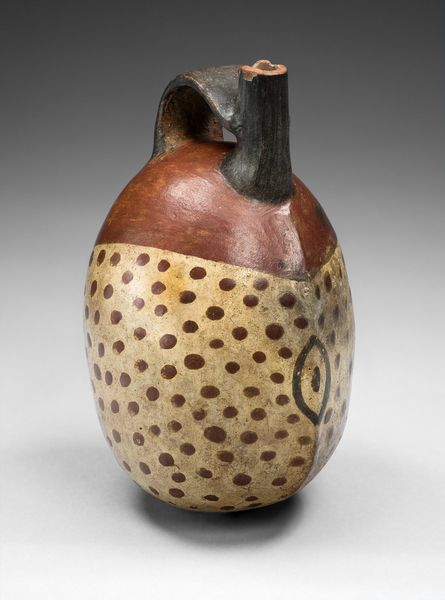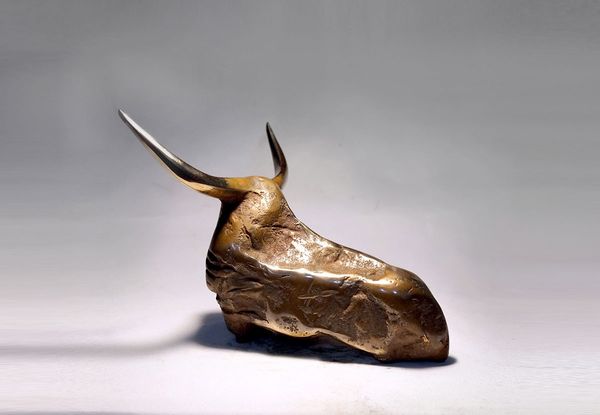
ceramic, sculpture
#
art-nouveau
#
ceramic
#
stoneware
#
sculpture
#
ceramic
#
united-states
Dimensions: 3 5/8 x 5 3/4 in. (9.2 x 14.6 cm)
Copyright: Public Domain
Curator: It’s my pleasure to introduce George Ohr's ceramic "Pitcher," likely crafted between 1895 and 1913, currently residing at the Metropolitan Museum of Art. Editor: My initial reaction is its earthy vulnerability. It has this mottled glaze, as if grown organically, but the crisp handle gives it a modernist touch. The form is both functional and deliberately disrupted. Curator: Indeed. The pitcher's surface, undulating like disturbed water, invites touch. This piece is indicative of Ohr’s departure from traditional pottery norms of the era. He’s almost dismantling the object, challenging functionality itself. Note, too, the dynamic interplay between the smooth, reflective glaze and the matte stoneware. Editor: I find that "dismantling" fascinating. Ohr used extremely thin clay walls to allow the vessel to move organically within the kiln. His physical interaction with the clay—pinching, folding, and tearing—it all embodies an expressionistic physicality rarely seen in functional ceramics of that period. Curator: Exactly, Ohr challenges classical form with gesture. The seemingly random manipulation reveals an interest in pure, abstract form. How do you see it functioning in art historical discourse? Editor: In relation to American Art Nouveau, Ohr shows an interest in handmade craft while simultaneously disrupting its norms. Ohr elevated it by engaging with labor and pushing technical constraints to their limits, rather than solely prioritizing decoration or beauty. It reminds us that art history is not only made of painting or bronze, but also mundane clay from Mississippi. Curator: Ultimately, it seems Ohr presents the functional as dysfunctional, or rather he asks us to renegotiate with purpose. It stands as both practical object and sculptural statement. Editor: Absolutely, Ohr's legacy urges us to reconsider conventional associations. It's a conversation, rather than an affirmation.
Comments
No comments
Be the first to comment and join the conversation on the ultimate creative platform.

